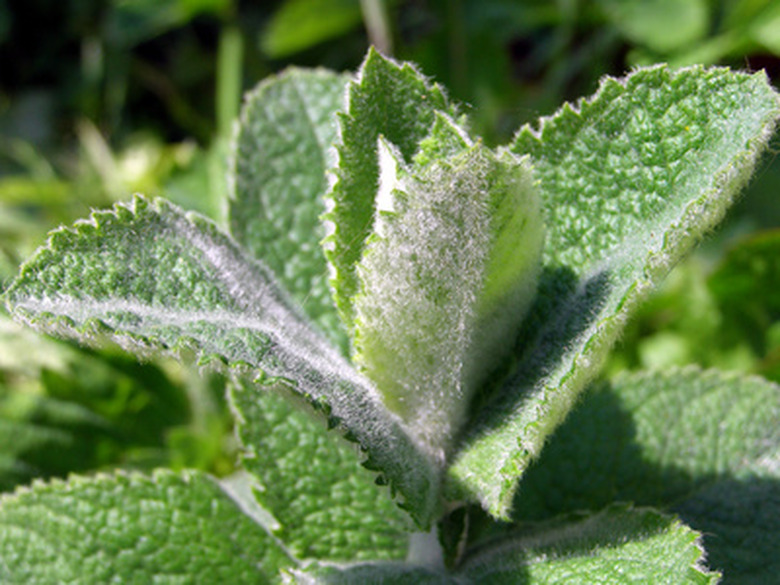What Attacks Mint Plants?
Mint (Mentha spp.) plants have been used by gardeners to help keep away pests such as mice, flies, moths, ants and mosquitoes. It's ironic, therefore, that mint itself is susceptible to certain garden pests. Mint can be used for a variety of different things, but if your mint plants get attacked or eaten, you won't be using them for anything.
Tip
Common mint pests include corn borers, loopers, cutworms and spider mites.
Mint Stem and Root Borers
The mint root borer (Fumibotys fumalis) is the larval stage of a moth known to do damage to the mint plants in your herb garden. When in the larval stage, mint root borers eat away at the roots and rhizomes of a plant, damaging the stability of the stalks and cutting off the vital delivery of crucial nutrients to certain parts of the plant. The mint stem borer (Pseudobaris nigrina) is also the larval stage of a moth. As borers chew into stems, generally at the base, the entire stem falls over.
Pesticides generally are ineffective against mint borers. Removing affected plants and infested soil is the best plan of attack.
Loopers on Mint Plants
Loopers are called so because of the way they walk in their larval stage due to the way their bodies work. Two primary looper species are common mint pests: the alfalfa looper (Autographa californica) and cabbage looper (Trichoplusia ni). Loopers usually attack mint plants from May to July, sometimes later depending on the weather. They eat the foliage of the mint plant, often consuming lots of the leaves and stems. The larvae look like little green caterpillars and the adults are brown moths. The females are usually light brown, and the males are darker brown in color.
For a small infestation, picking loopers off the plants can control the infestation. For a more severe problem, trim the mint plants to the ground and spray on Bacillus thuringiensis. This organic option takes care of the loopers but doesn't hurt other animals.
Cutworms on Mint Plants
Another common pest when growing mint, cutworms feed on mint plants both above and below ground. Above ground, they're known to eat the foliage produced by the mint plant. Below the surface, they typically eat through stems, causing great damage to the mint plant, including severing the plant at the soil line. Though there are many different kinds of cutworms, the most common variety are identifiable by a "V" shaped pattern on their back, and they're usually brown, green or creamy in coloration.
To prevent cutworms, get rid of all old plant debris before planting your mint. Use plastic or foil collars at the base of the mint plants, covering the stems up to 3 inches above the soil line and a few inches into the soil. Diatomaceous earth applied around the mint plants can prevent cutworms from reaching the plants. If you see larvae on the plants, pick them off and destroy them.
Two-Spotted Spider Mites
Two-spotted spider mites can cause serious damage to your mint plant, and though they can be too hard to see unless you're specifically looking for them, it's not hard to tell when they are infesting your mint plant. Usually found on the underside of the leaves, two-spotted spider mites break through the skin of the foliage with their mouth and suck out vital nutrients, which wither the plant and leave leaf matter yellow or brown. A common indicator of a two-spotted spider mite infestation is webbing. All spider mites create small webs on the plant visible to the naked eye.
It's absolutely vital to the survival and well being of your mint plant that you control spider mite population at the first sign of infection because of how quickly spider mite populations can grow out of control. Spray established mint plants with a garden hose to get rid of spider mites. You can also apply insecticidal soap for severe infestations without harming beneficial insects.
